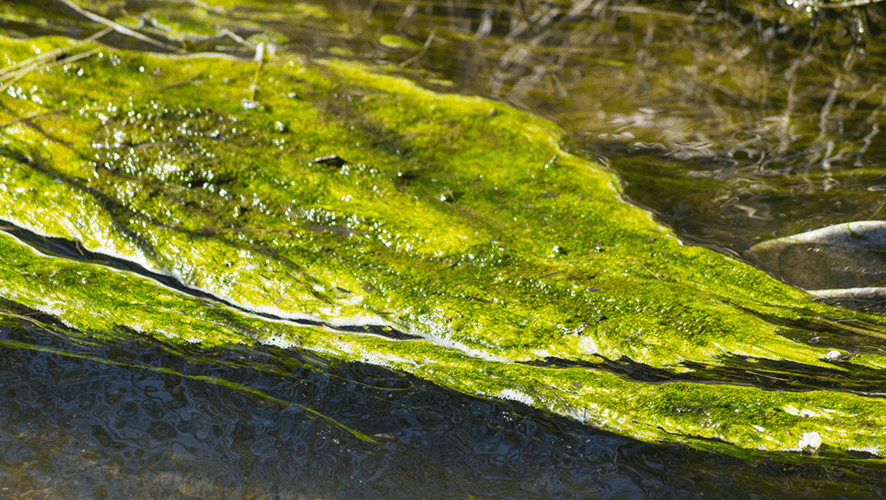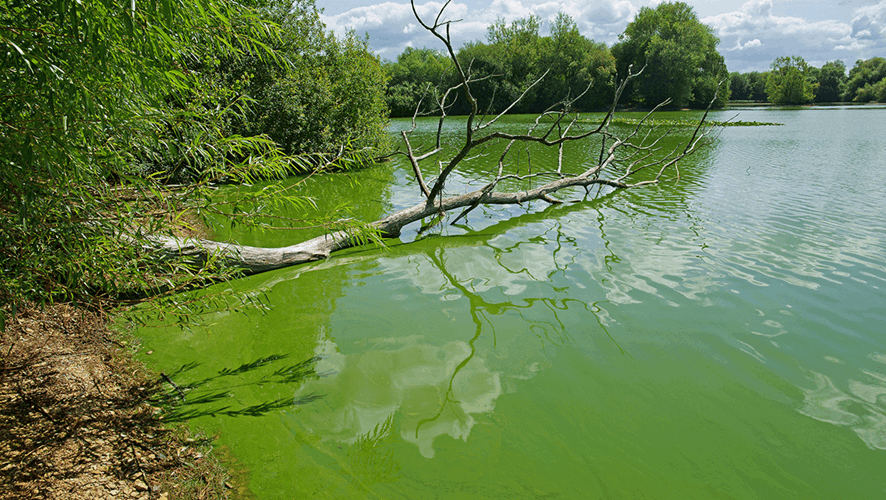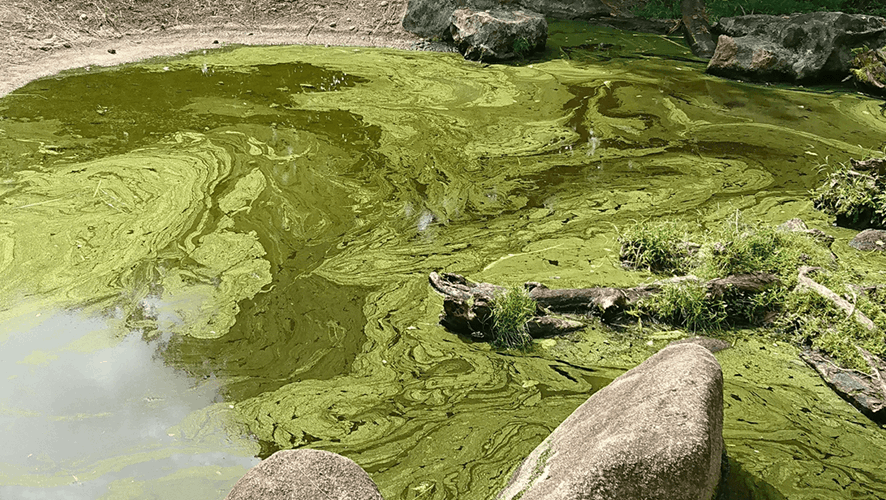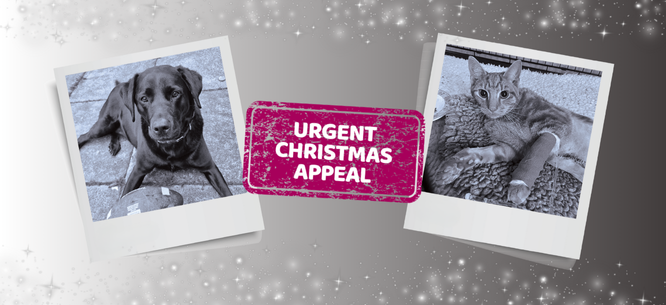Blue Green Algae Poisoning in Dogs
Overview
- Blue green algae is a dangerous bacteria that can be found in still or slow-flowing water.
- It produces invisible toxins that can cause organ damage and sometimes even death.
- Blue green algae is difficult to spot, so it’s important to know what to look out for.
- Blue green algae grows best in warm weather, so it’s more likely to cause poisonings in the summer months.
- Contact your vet ASAP if you think your dog has been exposed to blue green algae.
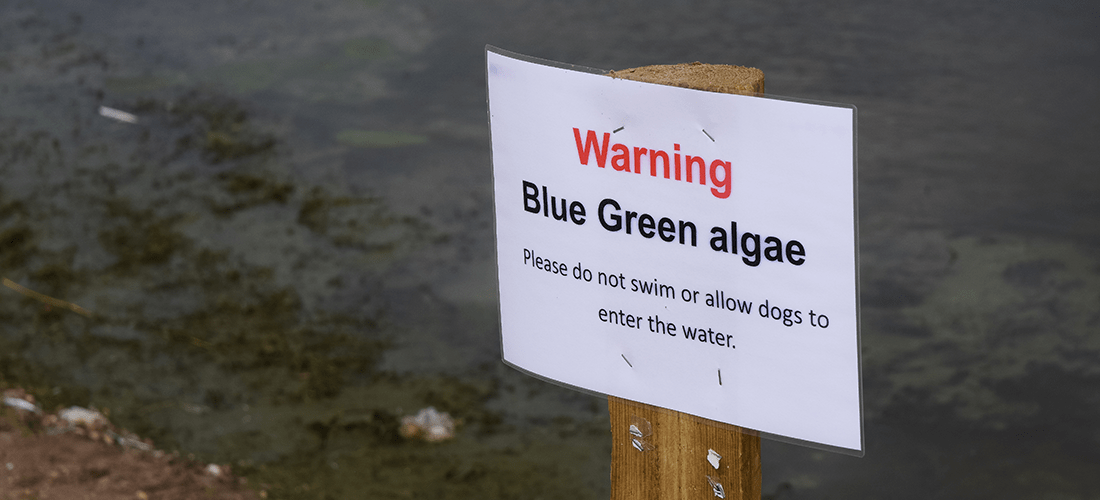
Blue-green algae (also known as ‘cyanobacteria’), is a type of bacteria that can grow in stagnant/slow flowing water such as ponds, lakes, streams and flooded areas. It’s extremely dangerous because certain types release toxins which can cause organ failure, severe illness, and potentially death. If you see any signs of blue-green algae, don’t allow your dog to touch or drink the water.
How to spot blue green algae
Blue green algae tends to grow in stagnant/slow-flowing water such as ponds, streams and lakes. It can be very difficult to spot, so keep an eye out for:
- Green/blue scum on the water’s surface
- Green/blue streaks in the water, which can look a bit like paint
- Green or brown clumps floating on the surface, that look a bit like seaweed
- Cloudy water with a green/blue/brown appearance.
- Green flakes or brown dots
- Foaming on the shore’s edge, which can look a bit like sewage
- Warning signs
- Dead fish/wildlife in the water
Symptoms
Blue green algae poisoning can take anything from 15 minutes to a few days to develop. They are often vague and include:
- Vomiting (sometimes with blood)
- Twitching
- Seizures
- Increased thirst
- Drooling
- Diarrhoea
- Breathing difficulties
- Collapse
- Sudden/unexplained death
Treatment
Once your dog is at the vets their treatment may include:
- Thorough cleaning - to remove any toxins from their fur.
- Toxin removal - your vet might need to make your dog sick and give them a charcoal meal to absorb any toxins remaining in their stomach.
- Intensive care - if your dog has already developed symptoms of poisoning, they are likely to need intensive care, which may include a fluid drip, medicines, close monitoring and blood tests.
How to avoid blue green algae poisoning
- Always check water before allowing your dog to swim in it, even if it’s somewhere you’ve been before.
- Be extra careful around stagnant water such as ponds and flooded fields, especially in the summer and autumn.
- Carry water for your dog to drink instead of letting them drink from open water.
- When travelling, check local council websites, and look out for warning signs around ponds, lakes or rivers.
- If you think you’ve found blue green algae, report it to the Environment Agency, or the local council who can test the water and put up warning signs if needed.
- Never let your dog drink from or swim in water with dead fish in it.
- Can people get blue green algae poisoning?
- Can other pets get blue green algae poisoning?
- Is blue green algae a bacteria or an algae?
Can people get blue green algae poisoning?
Yes, blue green algae toxins can affect humans. If you or someone you know has come into contact with blue green algae, contact your doctor or the NHS for advice.
Can other pets get blue green algae poisoning?
Yes, many animals can get blue green algae poisoning including cats, horses and fish. If you’re concerned your pet has blue green algae poisoning, contact your vet ASAP.
Is blue green algae a bacteria or an algae?
Blue green algae is actually a type of bacteria - the name comes from the fact it often forms a green scum that looks like algae on the surface of the water it grows in.
Published: September 2022
Did you find this page useful?
Tell us more
Please note, our vets and nurses are unable to respond to questions via this form. If you are concerned about your pet’s health, please contact your vet directly.
Thank you for your feedback
Want to hear more about PDSA and get pet care tips from our vet experts?
Sign up to our e-newsletter
Written by vets and vet nurses. This advice is for UK pets only. Illustrations by Samantha Elmhurst.



